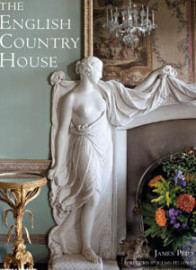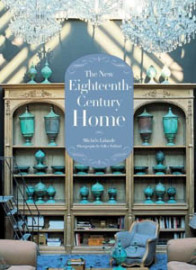The Bathroom Unlocked
As the discussion of cultural hybrids and civil rights suggests, my book not only traces how certain assumptions and codes came to be locked into place, it also considers cases where assumptions and codes have been ‘unlocked’ – at least in part. The later chapters focus on two phenomena in particular. The first considers the rise from the 1960s onward of the inclusive bathroom and the many social and legal shifts that combined to bring the needs of a far greater range of users, including the aged, women and people with disabilities, on to the design agenda. The second considers efforts to rethink waterborne sewerage. While this has a long history, the question has taken on a new urgency in the face of the sanitation crisis that faces the Global South.
Today no fewer than 2.6 billion people are estimated to lack access to basic sanitation; thousands of children under five continue to die every day due to faecal transmission of disease, deaths that basic sanitation could do much to prevent. Such shocking figures have served to nudge sanitation higher up the agenda of the international development community. In 2010, the United Nations declared access to clean water and sanitation to be a basic human right. And the UN’s Millennium Development Goals set the target of halving by 2015 the number of people living without basic sanitation. Although this goal has not been met, the field has lately been energized by the arrival of new champions with fresh approaches. Long one of the most unloved and moribund areas of government sponsorship and NGO support, sanitation now has the strong backing of organizations such as Unicef and WaterAid.
Recently too, and with great effectiveness, the Bill and Melinda Gates Foundation has thrown its heft behind the cause through its ‘Reinvent the Toilet’ challenge. As the programme’s name suggests, the Gates Foundation and many others are going back to the drawing board to attempt to solve the sanitation crisis. The idea of conventional sewerage is now subject to serious questioning, since it is seen as inappropriate for many areas of the world due to the high cost of new infrastructure as well as water scarcity. And in the quest to ‘reinvent the toilet’, new tools are being deployed with a visionary verve that would have warmed Buckminster Fuller’s heart, from 3-D printers (used to manufacture toilets from recycled materials) to tiger worms (used to break down excreta for compost).
Innovations in water conserving or on-site systems are relevant to the developed world, too, where certain communities still have very poor quality infrastructure – for instance First Nations peoples in Canada or poor rural communities in America – existing sewer systems are ageing and natural disasters are occurring more frequently. The inherent vulnerability of infrastructure was made terribly evident following the Christchurch earthquake of 2010, when many residents found themselves without running water or flushing toilets for long periods. (Those affected, however, responded with great inventiveness and wit, for instance, designing an emergency model of compost toilet that has now been adapted for other earthquake-prone regions, or humorously decorating their privies.) More generally, concerns about water supplies and conservation are also beginning to bite: recent building regulations enforce the use of less water-hungry bathroom fixtures, such as waterless urinals and dual-flush toilets. But will such measures be enough?
All in all, the time seems right to try to think more carefully about bathrooms – our use of them and their place within our society. How should we regard and value them? At present, cultural views towards the bathroom might be characterized as inconsistent and ambivalent, even schizophrenic. Britain’s pioneering efforts in sewerage and sanitaryware continues to be recognized as an extraordinary achievement and the source of no little pride. The historian Asa Briggs decreed the sewage system to be ‘one of the biggest technical and social achievements of the [Victorian] age’ and, when surveyed, a majority of medical experts and members of the public still agree. As I was finishing this book, The Economist magazine came out with a cover that featured Rodin’s The Thinker, seated on a toilet, musing: ‘Will we ever invent anything this useful again?’ Similarly, in private homes, bathrooms are becoming bigger and more lavish than ever, with an ‘average’ spend of £5,000 easily rising to £20,000 for a master bathroom.
Ron Arad, Hotel Puerta America, Madrid, 2005
Yet this trend towards private comfort and luxury contrasts sharply with the general condition of public facilities, which are clearly not valued in the same way; since 1995, 50 per cent of public toilets in the UK have closed, a decline which is consistent with that in other countries. The lack of response – much less outrage – about a move that negatively affects so many people, especially those who are most vulnerable, would seem to assert our collective indifference. But it is difficult to reconcile the signals. On the one hand, in certain contexts, the bathroom is regularly acknowledged to be important, a key component in the creation of liveable environments and healthy cities. On the other, the bathroom is often overlooked. It is low on the list of local government priorities and is often not seen as worthy of serious discussion (or of academic study, though this is changing). And in big architectural offices, designing bathrooms remains a job for the most junior architects – the architectural equivalent of ‘latrine duty’ in the army.
Such schisms may well be inevitable. For in studying the bathroom, we find ourselves touching the core of modern civilization’s values and ambitions, dreams and contradictions. The bathroom’s complexities echo those of society at large: variations in its form and meaning reflect the different settings and conditions in which it appears and the many uses to which it is put. This, in turn, is reflected in the broad range of spaces that are discussed in my book.
‘Bathroom’ by Barbara Penner, Published by Reaktion Books
Main image: Ann Agee, Sheboygan Men’s Room. Courtesy of the John Michael Kohler Arts Centre, Sheboygan, Wisconsin.
Images are courtesy of Reaktion Books Ltd
To order ‘Bathroom‘ please visit GDC interiors Book Collection on Amazon






















